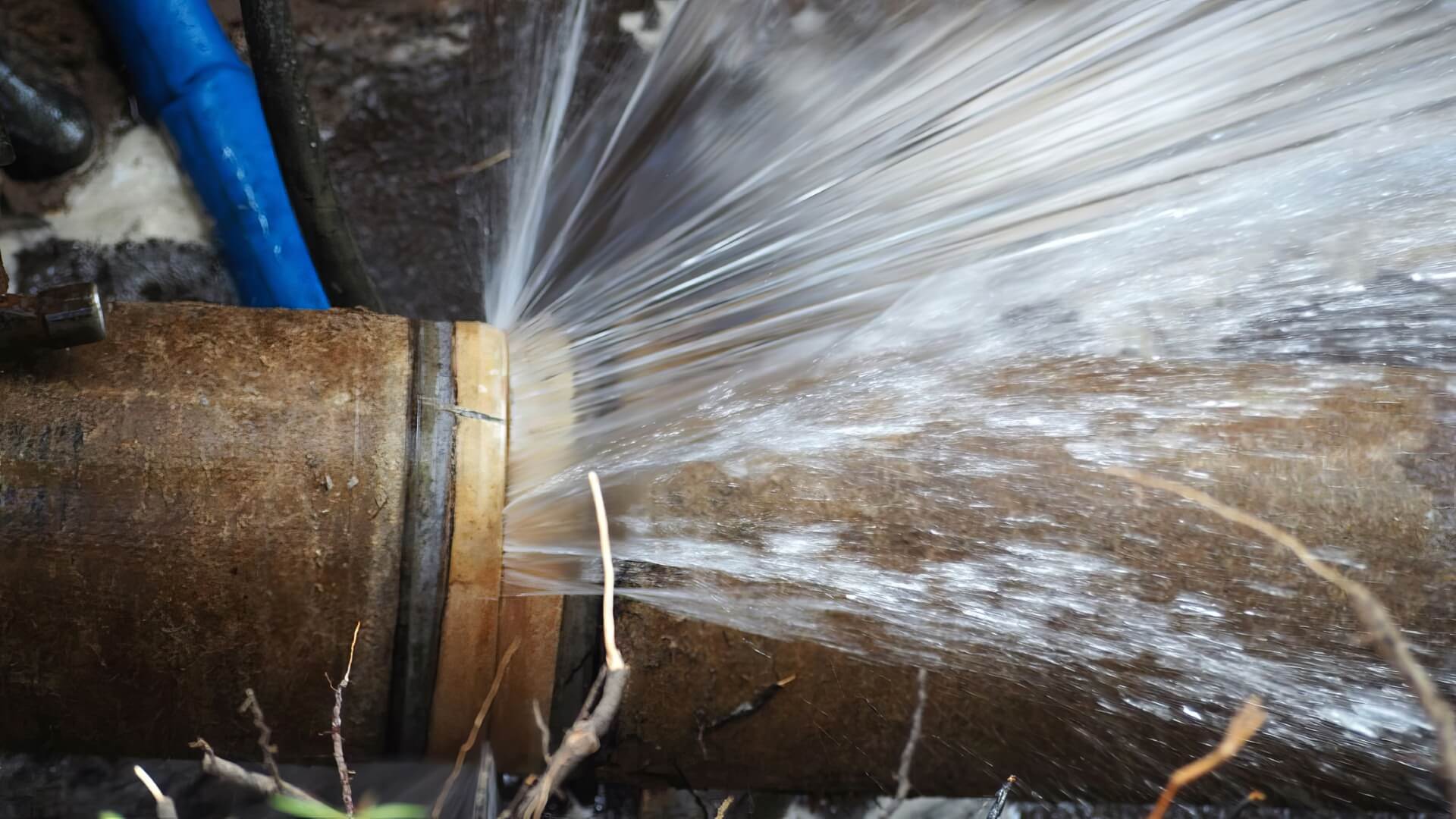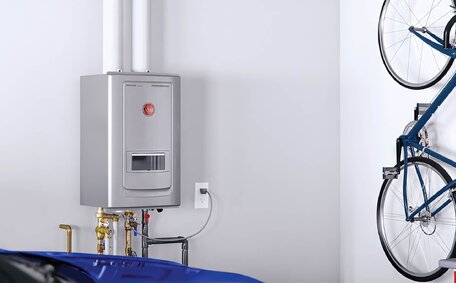How Do Seasonal Changes Impact Pipes?
Seasonal variations markedly affect pipes and plumbing systems. Severe temperatures can lead to pipe expansion and contraction, causing cracks, leaks, and bursts. Heavy rainfall and flooding during spring and summer can also infiltrate, compromising pipe integrity and causing backups and overflows.
Warmer and cooler months create soil fluctuations impacting underground pipes. When soil freezes in winter, it can cause pipes to shift, potentially allowing tree roots to find their way into your plumbing. In spring and fall when soil is softer, tree roots become more active and may force their way into your plumbing, obstructing flow.
These seasonal pipe issues indicate when your pipes may need relined, making certain times of year more challenging for sewer pipe relining projects. Ensuring dry ground conditions for excavation and warm temperatures for epoxy resin curing is crucial. Planning what pipe relining entails in fall or spring when soil conditions are more stable can prevent any potential complications.
Conducting plumbing inspections ahead of temperature changes or extreme weather helps homeowners reduce seasonal impact. Inspecting pipes before temperature shifts or heavy weather, as well as practising preventative plumbing maintenance, can help minimise pipe damage from seasonal changes.
Winter Weather Puts Additional Strain On Pipes
The winter months in Quakers Hill can be tough on plumbing systems, including washing machine pipes, with lower temperatures, heavy rains, and robust winds. Plummeting temperatures and the resultant contraction of hot water pipes can devastate your plumbing system. Extended freezing can worsen minor issues into serious pipe damage.
Torrential winter storms can lead to trenchless pipe relining situations where refined techniques may prevent water infiltration into your sewer pipe joints, staving off moisture damage and decay over time. High winds may also loosen sections of your damaged pipes, potentially leading to water damage, even if they are above-ground.
In winter, inspecting pipes and fixtures for leakage, moisture buildup or cracks is crucial. Look out for damp areas or water spots near joints as this may indicate a compromised seal. Listening for dripping noises can lead to early identification of cracked pipes before a major rupture occurs.
Preventative measures help safeguard against winter damage. Insulating your water pipes, sealing any external leaks properly, and Maintaining your drains clear of debris are all vital precautions. Knowing the signs of potential issues and understanding what you need know about pipe relining can address them proactively will ensure your plumbing remains intact and reduce the chance of costly emergency repairs.
Understanding how trenchless solutions can work is key, so if you observe persistent plumbing problems or suspect damage, contact our team. This trenchless method creates a protective barrier which can reinforce the interior of pipes instead of traditional pipe replacement digging. Pipe relining helps to guard against the inevitable wear tear that your sewer lines endure during winter’s harsh conditions.
Spring and Fall Offer Optimal Conditions for Pipe Relining Projects
Spring and fall tend to be the most ideal times for pipe relining projects. Spring and fall’s moderate temperatures are ideal for epoxy curing, as opposed to summer and winter extremes. The soil also softens in spring and fall which makes access to pipes easier with less excavation and disturbance required.
Take advantage of these seasons to have pipes checked when tree roots are dormant, as relining might suffice instead of replacement. With foliage dying back, root intrusions are easier to identify and address if found. The mild weather similarly helps ensure pipe relining best results, curing new pipe linings evenly and seamlessly.
Scheduling pipe relining ahead of traditional seasonal damages can sidestep potential emergency plumbing scenarios that winter or summer extremes might trigger. This strategy avoids emergency calls during harsh weather when relining may be more challenging.
For the best pipe relining solutions tailored to your needs, contact our team about optimal scheduling seasons. We can assess your pipes and advise you on the best timeframe to strengthen your plumbing system against the relentless wear and tear of daily use.
Preventative Maintenance is Key to Minimizing Seasonal Pipe Issues
Implementing preventative plumbing maintenance is crucial for minimising pipe damage as you change season. This includes regular pipe inspections, leak sealing and clear drainage systems maintenance.
Checking pipes before winter for cracks or signs of leakage allows issues to be addressed promptly. Insulating outdoor pipes helps protect from freezing. Prune trees near pipes in fall to minimise root infiltration.
Prevent system blockages by clearing gutters and drains of debris before heavy rains. Keeping an eye on drain pipe conditions under your home for signs of moisture buildup or damp spots also helps in catching deteriorating seals early.
Benefit from yearly pipe inspections; assessing pipe conditions in early spring enables our team to suggest relining if needed. This prevents further damage and weathering before next winter.
Preventative relining can stave off significant replacement projects later on. The small effort involved precludes costly repairs over emergency repairs of burst pipes that weather damage could cause otherwise.
Contact our team to discuss preventative measures against broken pipes and maintenance options customised for your property throughout the season changes.
Signs Your Pipes May Need Relining This Season
There are several warning signs that suggest your pipes might require relining this season:
- Visible water leaks, which can compromise your water supply, or damp spots around your pipes
- Diminished water flow or sudden drops in water pressure without explanation
- Gurgling sounds from your toilet bowls or slow draining water
- Musty sewage odours coming from sinks or drains
- Clogs and backups happening more frequently
Recurring plumbing problems may indicate weakened pipes needing relining. The moderate temperatures of spring and fall allow pipes to be accessed and lined smoothly before harsh seasonal weather sets in.
We recommend getting your sewer drain inspected now by our team if you observe these problems. Catching damage early means less repairs required. Plus, scheduling ahead secures an optimal pipe relining slot before the busy autumn season sends our bookings skyrocketing.
Don’t wait until you have a burst pipe emergency. Be proactive against further weather damage. Contact us to discuss the pipe relining process and have your pipesassessed.
Benefits of Pipe Relining Over Pipe Replacement
Pipe relining has numerous benefits over total pipe replacement.
Considering the pipe relining costs, it is a cost-effective and minimally invasive solution that reinforces existing pipes from the inside without need for excavation. This method often finishes in one day, preventing the disruption and damage caused by digging up your lawn.
The process of pipe relining only involves feeding a resin-saturated liner into damaged pipes and curing it to form a smooth, protective inner barrier. This method ensures your drain can regain a lot more than just structural stability; it also seals cracks and leaks, and improves overall flow.
Unlike pipe replacements that require new trenches, relining can save your landscaping and structures from significant impact. It also creates less mess and allows normal water usage to resume faster once complete.
Proactive relining decisions can save considerable time, money, and hassle compared to the emergency aftermath of burst or leaking pipes.
With pipe relining able to reinforce pipes for decades, it eliminates the labour and costs involved in future pipe installations. Contact our team to see if your pipes are suitable candidates for trenchless relining.
What the Pipe Relining Process Looks Like
The pipe relining process is a trenchless method that renews old pipes from the inside without digging or destruction to surrounding structures and landscaping.
Our efficient team starts with a thorough camera inspection of your pipes’ interior to identify defects or problem areas. We then use high-pressure water jets to clean out the existing pipe, preparing your pipe system for relining.
We insert a liner saturated with durable epoxy resin and felt exterior into the pipe. We then inflate the liner with steam until it adheres to the inner walls, sealing cracks and filling in any grooves or corrosion for a smooth finish.
The liner is left to cure for a few hours, during which time it hardens to a level of durability superior to the original material and regular water use can still continue. Once set, the hardened pipe lining is structurally reinforced and chemically resistant to prevent future deterioration.
The pipe relining process is considerably less invasive than digging up pipe segments, protecting your garden from disruption. Your property stays fully intact and restored back to normal quickly with no aesthetic damage or functionality loss.
The seamless epoxy barrier also improves drainage flow and pressure by smoothing out pipe interiors. And the durable relining prevents leaks, cracking, roots or sediments from compromising your pipes again for decades.
Choosing the Right Plumber for Your Pipe Relining Project
Selecting a plumbing service for pipe relining requires evaluating their specific expertise in trenchless pipe renewals. Look for a well-established local plumber that specialises in the benefits pipe relining brings, with projects of all sizes and an extensive portfolio to showcase their quality workmanship.
The right plumber can give you what you need know about pipe relining vs traditional replacement methods and will use industry-leading equipment backed by thorough inspections with high-resolution drain cameras. They should clearly explain the relining process and expected timeframe so youll need to know what to anticipate. Transparent pricing with no hidden fees is also vital.
Availability to complete projects promptly before seasonal weather impacts is another key factor. Moderate temperatures are essential for correct epoxy curing, making early spring or autumn ideal for pipe relining.
Our family-run business has specialised in pipe relining in Quakers Hill for over a decade. With a 97% on-time customer satisfaction rating, we have the expertise to advise and carry out exceptional pipe need repairs and renewals that stand the test of time. Contact us today to discuss your pipe relining needs.
Why Quakers Hill Plumbing Should Be Your First Call
With a 15-year track record in pipe relining, Quakers Hill Plumbing is your go-to local plumbing service for residential and commercial needs.
We are fully licenced and insured plumbers specialising in a wide range of services including drain sewer cleanings and more:
- Trenchless Drain relining and trenchless pipe repairs
- Blocked Drain cleaning services and unblockings
- Water leak detection and pipe repairs
- Water heater installations and repairs
- Gas fitting for leaks, appliances and more
Our expert team uses state-of-the-art tools and training to reinforce pipes via relining, saving you the mess and cost of excavation. Reach out to schedule our pipe relining service today. We also comply fully with industry regulations and standards.
Contact Quakers Hill Plumbing today on 1300 349 338 or [email protected] to book your appointment. We offer flexible bookings, upfront pricing, and provide reliable solutions you can trust.






